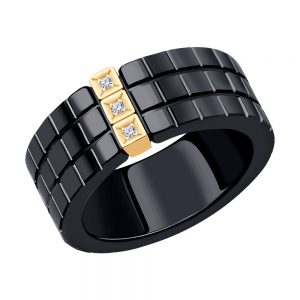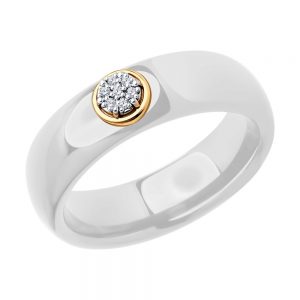Ceramics have long been an essential part of human life, carrying with them aesthetic values that have been passed down through the ages. With the development of modern society, ceramic products have increasingly become more focused on decorative and artistic displays, such as ceramic vases, planters, murals, and, as emphasized in this article, ceramic jewelry.



Currently, jewelry design worldwide primarily revolves around precious metals and rare, colorful gemstones. However, the values of many consumers are shifting away from judging jewelry based on the rarity and cost of materials, and are increasingly centered on the decorative function of the piece, its coordination with clothing, and its ability to express individuality and taste. Fortunately, ceramics, due to their accessibility, eco-friendly properties, ease of design and manufacturing, as well as their extraordinary artistic effects, align perfectly with contemporary expectations for jewelry. Below are some key advantages of ceramic jewelry.
The primary component of clay is made up of mineral particles smaller than 0.005 millimeters in diameter. It is mainly composed of silicon dioxide and aluminum oxide, and contains trace amounts of iron oxide, calcium oxide, magnesium oxide and other complex compounds. When dried, it forms lumps that can easily be ground into powder, and when mixed with water, it becomes malleable enough to be shaped into various forms. This offers designers the freedom to unleash their creativity, integrate personal preferences, and break away from conventional design ideas, resulting in truly innovative pieces.
It is well known that color can significantly impact a person’s psychology. During the production process of ceramic jewelry, the materials and techniques can be adjusted to produce unique, vibrant colors. This allows ceramic jewelry to stand out with a variety of hues, offering endless possibilities for customization.
The raw materials used for ceramic jewelry primarily consist of clay, which is formed through the natural weathering and decomposition of rocks. With extremely low levels of harmful heavy metals, ceramic jewelry is a safer option compared to precious metals. It can be worn frequently and in direct contact with the skin without posing health risks.
Ceramic jewelry can be made using various molding techniques. In addition to traditional handcrafting methods, there are many advanced modern forming processes available. Depending on the design requirements, production scale, and desired properties of the ceramic, common methods include compression molding, ceramic powder injection molding, and casting with molds.
Since ceramic raw materials are more readily available, ceramic jewelry is much less expensive compared to precious metal alternatives. Moreover, ceramic jewelry is not subject to the price fluctuations that affect the precious metals market, resulting in a significant cost advantage. After high-temperature firing, ceramic jewelry exhibits excellent wear resistance and aging resistance, providing a better long-term value for consumers.
In summary, the unique characteristics of ceramic materials make ceramic jewelry an ideal choice for those seeking affordable, creative, and expressive pieces.
Jewelry setting and mounting is the process of securing gemstones using vario...
Today, the production workshop is a picture of busy yet orderly progress. The...
Brass main components: copper and zinc Features: high ductility, high plastic...
Brass and silver jewelry has a strong historical and cultural background and ...